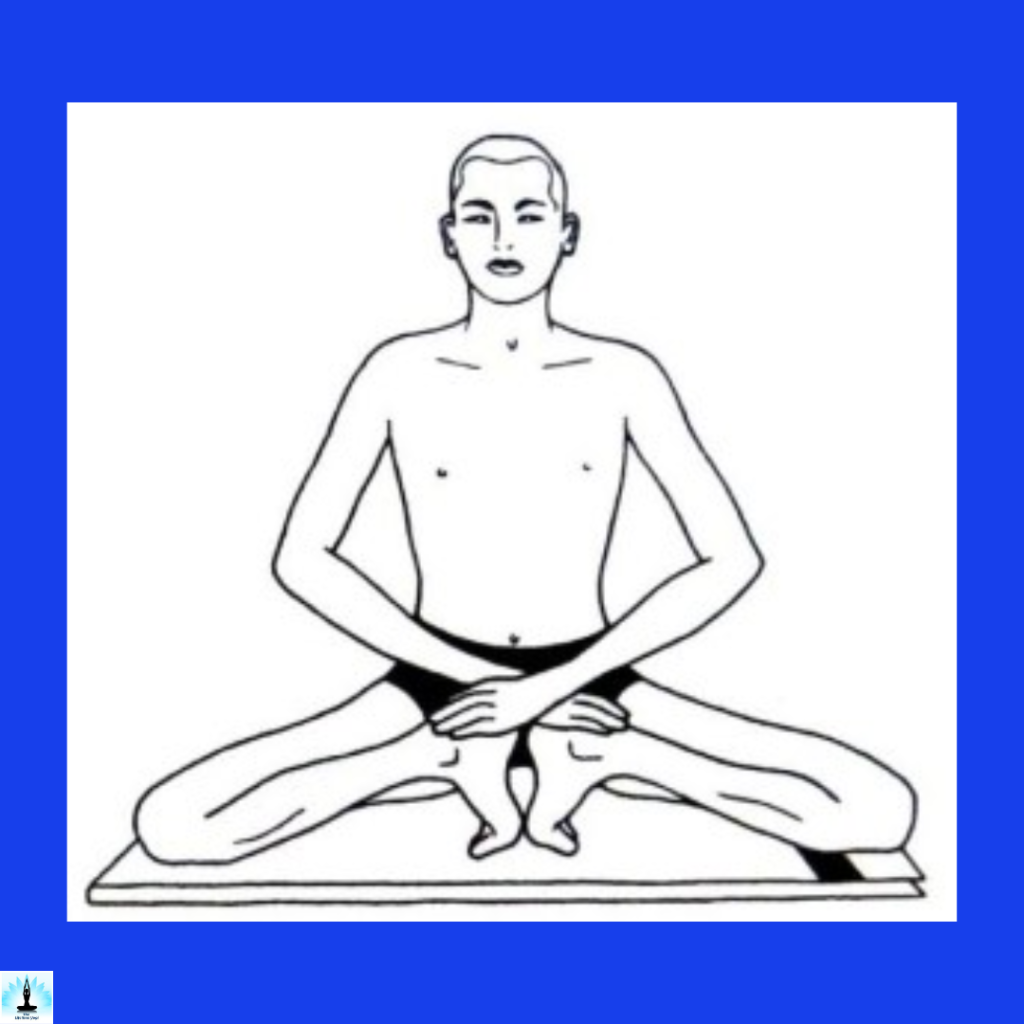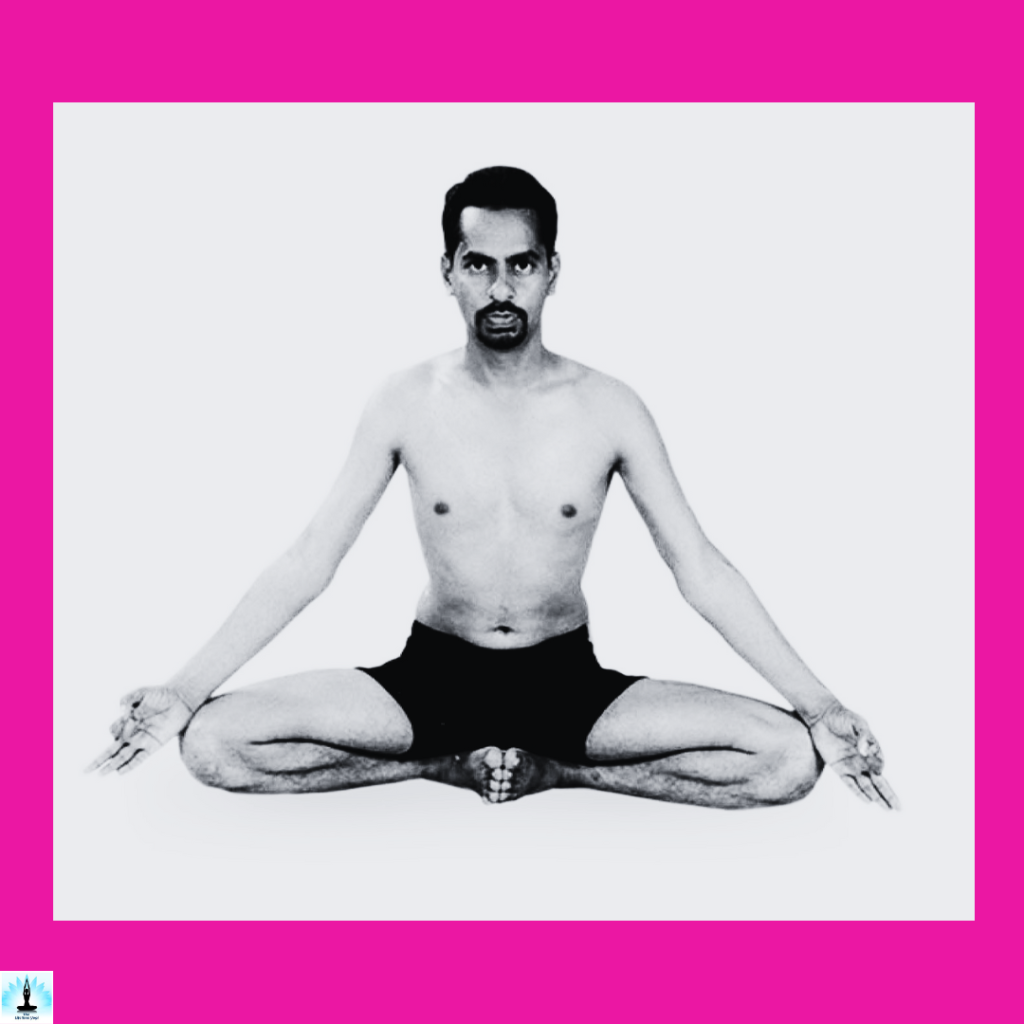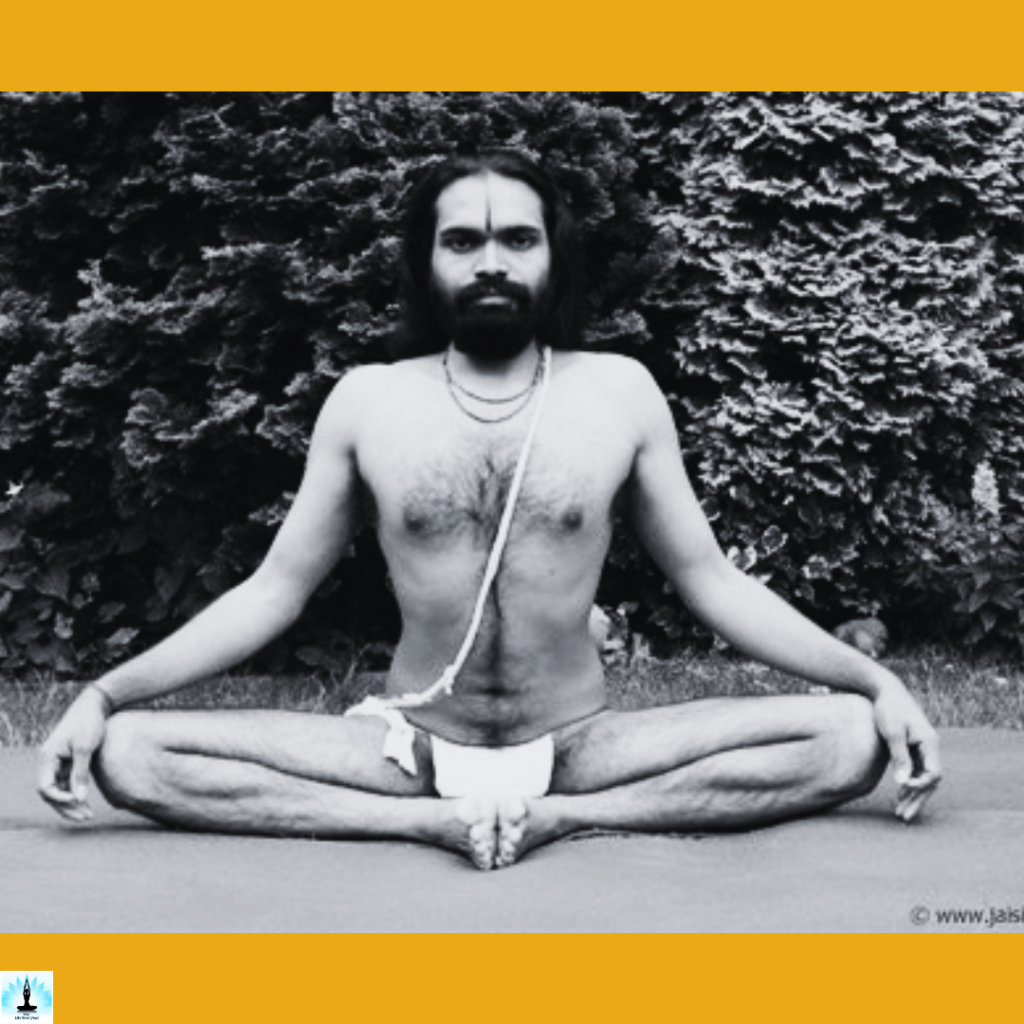Introduction – Top 9 Benefits of Gorakshasana And 10 Step-By-Step Instructions of Gorakshasana
Gorakshasana, named after the revered sage Gorakshanath, emerges as a symbolic embodiment of the ancient wisdom and transformative power found within the realm of yoga. This seated pose gracefully weaves together strength and serenity, inviting practitioners to traverse the delicate balance between effort and surrender. As we venture into the realm of Gorakshasana, we embark on a journey that transcends the physical realm, delving into the profound connection between mind, body, and spirit.
Table of Contents
The Yogic Philosophy of The Gorakshasana
The Gorakshasana, a posture reminiscent of the revered sage Gorakshanath, beckons us to journey inward, embracing both the stillness of the ancient mountains and the vibrant flow of life’s river.

Like the steady gaze of a yogi in meditation, this pose embodies unwavering focus and an unyielding connection to the universe’s rhythm. With each breath, we draw in the essence of Gorakshanath’s teachings – a profound union of mind, body, and spirit.
Benefits of Gorakshasana
The Gorakshasana, inspired by the ancient sage Gorakshanath, offers a tapestry of soul-nurturing benefits that resonate through every fiber of our being:

- Sacred Union of Breath and Form: Gorakshasana weaves the breath and body into a harmonious dance, an exquisite symphony that tunes the instrument of our existence to the rhythms of the cosmos.
- Strength and Surrender: In this pose, strength and surrender embrace like long-lost lovers, inviting us to wield our inner power with gentleness and grace, while relinquishing control to the universal flow.
- A Gaze into Stillness: The pose’s contemplative nature opens a window to the vastness of stillness, allowing us to bathe in the tranquil depths of our own consciousness.
- Heart’s Expansion: As we extend our chest skyward, Gorakshasana becomes a sanctum where the heart unfolds its tender petals, basking in the warmth of self-love and compassion.
- Rooted in Earth, Reaching for Sky: Like a tree that anchors deep into the earth while yearning for the heavens, Gorakshasana grounds us in the present moment while nurturing our dreams and aspirations.
- Energy Flow and Vitality: The pose awakens the subtle energy channels, propelling a surge of life force that revitalizes our spirit, leaving us invigorated and ready to embrace life’s journey.
- Wisdom of the Ancients: By embodying the essence of Gorakshanath, we draw upon centuries of wisdom, fusing tradition with modernity to create a bridge that spans the ages.
- A Mirror to the Soul: Gorakshasana serves as a mirror to our inner landscape, reflecting our fears, hopes, and desires, urging us to delve deeper into the reservoir of self-discovery.
- Release and Liberation: As we fold into the pose’s embrace, tensions melt away, and with each exhale, we release burdens that no longer serve, paving the path to emotional liberation.
Cowherd Pose: Step-by-Step Instructions
Embark on a soul-stirring journey into the heart of Gorakshasana, a homage to the ancient sage Gorakshanath, as you weave together the threads of strength and serenity in this poetic asana. Let your practice become an ode to the timeless wisdom that echoes through the ages:

- Foundation of Stillness: Begin in a tranquil haven on your mat, where the very essence of Gorakshanath’s teachings seems to whisper through the fibers. Ground yourself, allowing your breath to mirror the steady rhythm of ancient mountains.
- Seat of Reverence: With grace, come to a seated position, cradling your legs beneath you like a precious offering to the universe. Sense the connection between your body and the earth, as if you’re partaking in a cosmic dance.
- Guided Gaze: Fix your gaze on the horizon, much like the sage who gazes into the infinity of knowledge. Feel your inner vision expand, bridging the gap between the tangible and the ethereal.
- Ascent of the Heart: As you inhale, lift your heart skyward, your chest blossoming like a lotus unfurling in the morning sun. Embrace the boundless potential that resides within you, just as Gorakshanath embraced the mysteries of existence.
- An Echoing Embrace: With reverence, lift your right arm towards the heavens, fingers reaching to touch the fabric of the divine. Your left arm mirrors the ascent as if they’re two celestial lovers reaching for each other across the cosmos.
- Whispers of Surrender: As you exhale, allow your body to tenderly fold towards the left side, a gentle surrender akin to the sage’s embrace of the unknown. Your right-hand caresses your left ear, a whisper of connection between the finite and the infinite.
- A Breath of Unity: Inhale deeply, breathing in the wisdom of generations past, and exhale with a sense of release, as if you’re exhaling the burdens of your soul. Let your breath become the bridge that unites your inner landscape with the vast expanse of the universe.
- Return to Center: Inhale once more, like a sage drawing from the wellspring of knowledge, and gracefully return to the center. Your heart, a vessel of wisdom, pulses with the rhythm of the cosmos.
- The Other Side Beckons: Raise your left arm in homage to the boundless sky, your gaze turned upwards in reverence. The journey of the sage is never one-sided; it’s a dance that weaves through the tapestry of existence.
- A Gentle Bow: With the grace of a sage bowing to the divine, exhale and tenderly fold towards the right side. Your left-hand cradles your right ear, a gesture of humility and surrender to the mysteries of life.
Advance Variations of Gorakshasana
Here are some advanced variations of Gorakshasana (Cowherd Pose) to explore and deepen your practice:
- Gorakshasana with Twist: From the basic Gorakshasana, inhale and lengthen your spine. As you exhale, twist your torso to the right, hooking your left elbow outside your right knee. Place your right hand behind you for support and gaze over your right shoulder. This variation enhances spinal mobility and offers a deeper twist.
- Elevated Gorakshasana: Sit on a folded blanket or bolster to elevate your hips slightly. This modification provides a different angle for the pose and can make it more accessible if you have tight hips.
Therapeutic Applications of Gorakshasana
Gorakshasana (Cowherd Pose) holds therapeutic potential that extends beyond the physical realm, offering a sanctuary of healing and restoration for both the body and the mind. Here are some therapeutic applications of Gorakshasana:
Hip and Shoulder Relief: Gorakshasana gently and systematically stretches the hips and shoulders, making it a valuable pose for individuals dealing with hip joint discomfort, stiffness, or shoulder tension. The pose’s mindful approach promotes relaxation and release in these areas, helping to alleviate chronic discomfort.
Postural Alignment: Regular practice of Gorakshasana enhances awareness of body alignment and encourages proper posture. It can be beneficial for individuals who spend prolonged hours sitting or working at a desk, aiding in the prevention and alleviation of postural imbalances.
Stress and Anxiety Reduction: The calming and introspective nature of Gorakshasana makes it an excellent tool for managing stress and anxiety. The pose’s meditative quality, combined with conscious breathing, cultivates a sense of inner peace and tranquility.
Poses Related to Gorakshasana
Preparatory Poses of Gorakshasana
Prepare your body and mind for the nurturing embrace of Gorakshasana (Cowherd Pose) by weaving a sequence of preparatory poses that gradually guide you into its soothing depths. Here are some preparatory poses to create a seamless journey into Gorakshasana:
Lizard Pose
Step your right foot forward between your hands and lower your left knee to the ground. Sink your hips down and gently walk your hands forward, feeling a deep stretch in the hip flexors and groin. This pose prepares the hips for the external rotation required in Gorakshasana.
Extended Triangle Pose (Utthita Trikonasana)
Step your feet wide apart, turn your right foot out, and reach your right hand towards your right foot. Extend your left arm towards the sky. This pose stretches the sides of the body and helps open the shoulders, enhancing the range of motion for Gorakshasana.
Follow-up Poses of Gorakshasana
Bridge Pose (Setu Bandhasana)
Lie on your back with your knees bent and feet flat on the floor. Lift your hips towards the ceiling, interlace your hands underneath your back, and press your arms down to lift your chest. This backbend pose complements the heart-opening qualities of Gorakshasana and promotes spinal flexibility.
Wide-Legged Forward Fold (Prasarita Padottanasana)
Step your feet wide apart and hinge forward from your hips, reaching your hands towards the floor. This pose stretches the hamstrings, hips, and spine, creating a sense of spaciousness and release after the introspection of Gorakshasana.
Half Lord of the Fishes Pose (Ardha Matsyendrasana)
Sit with your legs extended in front of you. Cross your right foot over your left knee and place it on the floor. Inhale to lengthen your spine, and as you exhale, twist towards the right, hooking your left elbow outside your right knee. This seated twist continues the theme of gentle twisting and enhances spinal mobility.
Beginner’s Tip of Gorakshasana
For those beginning their journey with Gorakshasana (Cowherd Pose), it’s essential to approach the pose with a compassionate heart and a willingness to explore. Start by focusing on the foundational elements, such as finding a comfortable seated position and gently crossing one leg over the other.
If binding your hands behind your back feels challenging, use a strap or a cloth to bridge the gap between your hands and gradually work towards the full bind over time. Prioritize the alignment of your spine and the ease of your breath, allowing the pose to unfold naturally.
Contraindications and Cautions of Gorakshasana
While Gorakshasana (Cowherd Pose) offers numerous benefits, it’s important to be mindful of certain contraindications and cautions. Individuals with knee or hip injuries, as well as those with shoulder issues, should approach this pose with caution or avoid it altogether.
Pregnant individuals and individuals with high blood pressure should also exercise discretion, and modifications may be necessary. As Gorakshasana involves binding the hands behind the back, individuals with limited shoulder mobility or injuries should take care and use props like a strap.
FAQs on Gorakshasana
here are some frequently asked questions (FAQs) about Gorakshasana (Cowherd Pose), along with their answers:
1. What is Gorakshasana?
Gorakshasana, also known as Cowherd Pose, is a yoga asana that involves crossing the legs and binding the hands behind the back. It is a seated pose that offers hip and shoulder opening benefits, along with a sense of grounding and introspection.
2. Who is Gorakshanath, and why is the pose named after him?
Gorakshanath was an ancient yogi and one of the founders of the Nath tradition of yoga. He is often regarded as a legendary figure and a master of Hatha Yoga. The pose is named after him as a tribute to his contributions to yogic philosophy and practice.
3. What are the benefits of Gorakshasana?
Gorakshasana stretches the hips, thighs, and shoulders, enhances flexibility, and promotes proper posture. It also encourages mindfulness, relaxation, and a sense of inner balance.
4. Can beginners practice Gorakshasana?
Yes, beginners can practice Gorakshasana, but it’s important to approach it with caution and patience. Using props like a strap can make the pose more accessible, and modifications can be made to accommodate individual flexibility levels.
5. How do I bind my hands behind my back in Gorakshasana?
Binding the hands behind the back in Gorakshasana might be challenging for some. If you cannot reach your hands, use a strap or cloth to bridge the gap between them. Hold the strap in one hand and reach the other hand behind your back, working towards the bind over time.
6. Can Gorakshasana be practiced during pregnancy?
Pregnant individuals should approach Gorakshasana with caution and consider avoiding it, especially as the pregnancy progresses. It’s important to prioritize comfort and safety for both the practitioner and the baby.
7. What should I do if I experience discomfort while practicing Gorakshasana?
If you feel discomfort or strain while practicing Gorakshasana, release the pose gently and come back to a comfortable seated position. Listen to your body and avoid pushing yourself beyond your limits. You can use props, modify the pose, or skip it if needed.
8. Is Gorakshasana suitable for everyone?
While Gorakshasana offers benefits, it may not be suitable for individuals with certain medical conditions, such as knee, hip, or shoulder injuries. Always consult a healthcare professional before attempting the pose if you have specific concerns.
9. Can Gorakshasana help with stress and anxiety?
Yes, Gorakshasana’s meditative and introspective qualities can help reduce stress and anxiety. The focus on breath and mindfulness creates a calming effect on the nervous system.
10. How long should I hold Gorakshasana?
You can hold Gorakshasana for about 30 seconds to a minute on each side. However, the duration can vary based on your comfort and experience level. Remember to focus on your breath and practice mindfully.
Conclusion
In the serene conclusion of Gorakshasana (Cowherd Pose), we find ourselves woven into the timeless tapestry of yoga, embodying the teachings of the ancient sage Gorakshanath. As we gently release the bind, we unravel not just the physical tension but also the layers of our own being, returning to a state of quiet introspection. The journey through this pose, with its fusion of strength and surrender, mirrors the delicate balance we seek in life – a dance between effort and ease, a union of body and spirit.
Further reading
References
- Tigunait, Pandit Rajmani. “Gorakshasana: Master Pose of Tantric Yogis”. Yoga International. Retrieved 11 January 2019.
- “Gorakshasana – Yogi Gorakhnath’s Pose”. Yogic Way of Life. August 2015. Retrieved 11 January 2019.
- Iyengar, B. K. S. (1979) [1966]. Light on Yoga: Yoga Dipika. Unwin Paperbacks. pp. 142–143.
- Wagenaar, Henk W.; Parikh, S. S. (1993). Allied Chambers transliterated Hindi-Hindi-English dictionary. Allied Publishers. p. 223. ISBN 978-81-86062-10-4.
- “Gorakshasana”. Jaisiyaram. Retrieved 16 February 2019.
